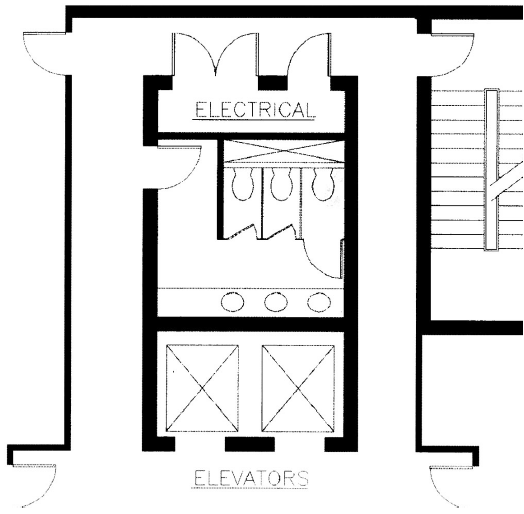General [4.1.6(1)]
ADAAG sets minimum requirements for accessibility in alterations. New construction technical criteria are applied to each element or space altered where technically feasible. Compliance can be followed on an element-by-element basis, except where the work amounts to full alteration of a room or space, in which case the room or space must be made fully accessible. For example, if a toilet room renovation is limited to replacement of a lavatory and reflooring, then the new lavatory and floor must comply; where the work is more extensive and also involves moving walls and stall partitions, then the room itself must be brought into full compliance. Compliance is required in either case to the maximum extent it is "technically feasible." As defined in ADAAG, this covers existing structural or space constraints that prohibit compliance, such as removing or altering a load-bearing member of the structural frame.
Other examples might include:
-
widening of a toilet stall that would reduce the number of fixtures below that required by code
-
achieving level slopes at accessible parking where work involves resurfacing but not regrading
-
limitations imposed by existing walls that are not being moved or altered, elevator hoistway shafts, electrical closets, or means of egress when additional space is necessary to make an existing room, such as a restroom, accessible.

Provisions in 4.1.6(1) clarify compliance in relation to certain elements. New construction scoping remains the basis so that compliance in an alteration is not interpreted as requiring a higher level of access. For example, 4.1.6(1) describes the type of work that triggers provision of vertical access between floors (major structural modification resulting from replacement or addition of stairs or escalators); this does not apply to buildings that would be exempt from the requirement for an elevator in new construction (the exemption is repeated in the alterations section).

User Comments/Questions
Add Comment/Question